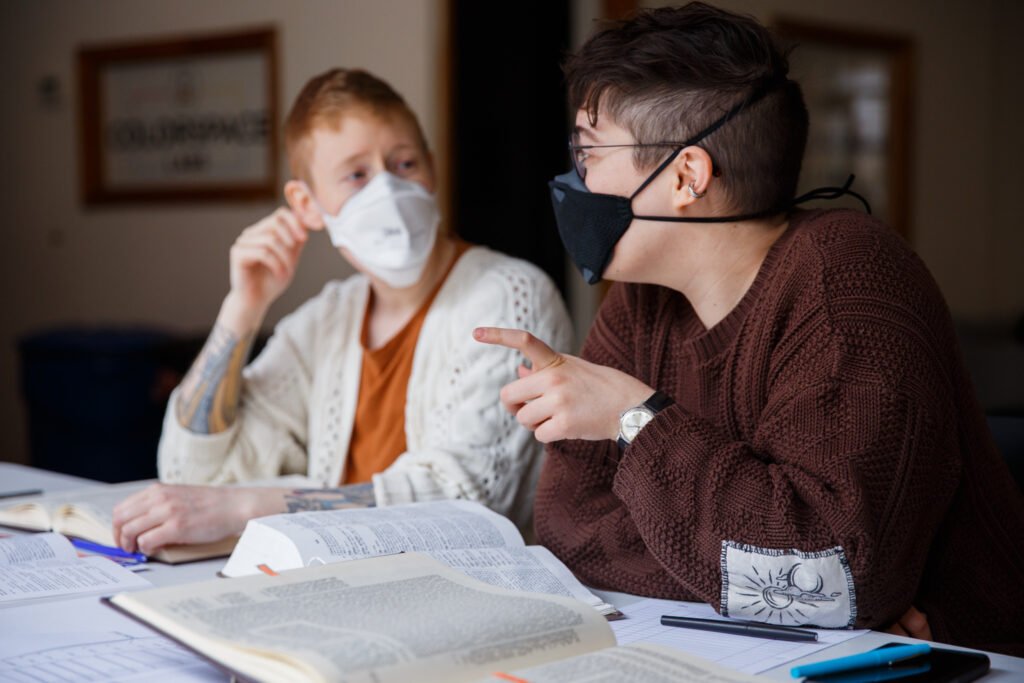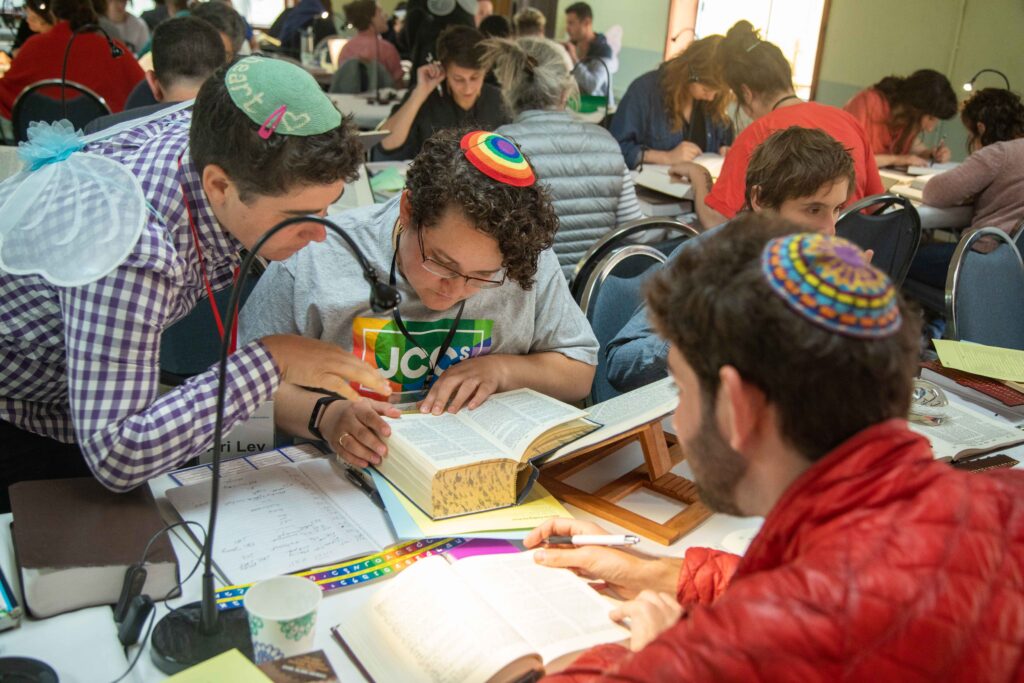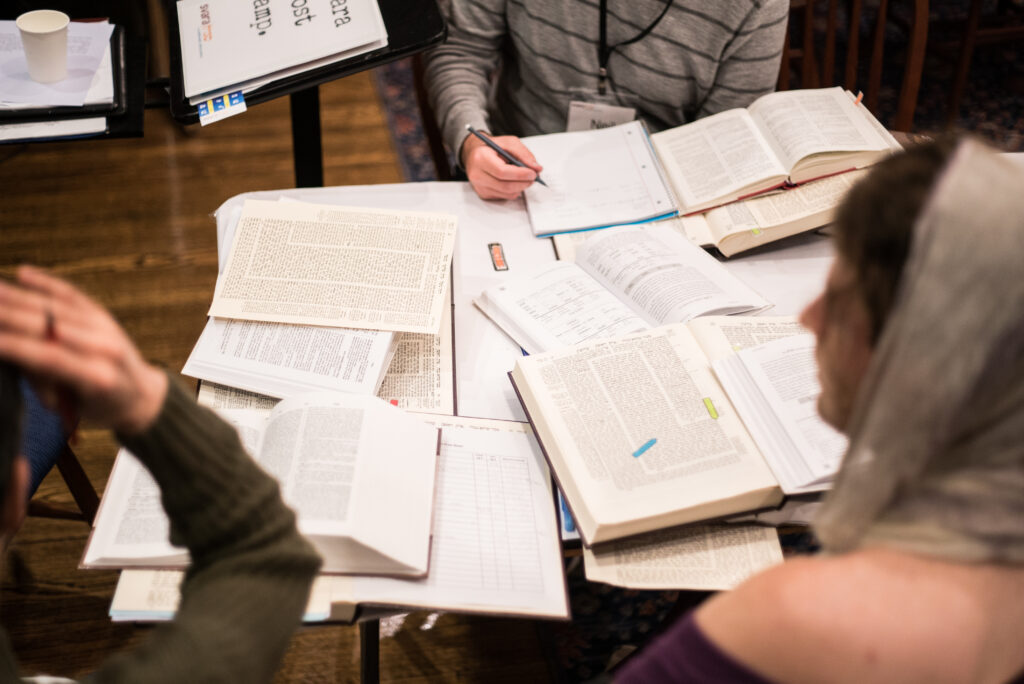In her recent Rosh Chodesh piece for the month of Adar II, my friend and colleague Rav Avigayil Halpern beautifully describes the emotional place of the Jewish calendar this time of year and perhaps, even more, the ways in which joy—simcha—shows up in Jewish spaces. Using the famous piece of Gemara in Taanit 29A that teaches us that when the month of Adar enters, we increase in joy, Avigayil invites us into a deeper conversation about the role—and types of joy—that are found and often expected. Does Adar’s joy need to be of the loud, boisterous variety? Or can it be quieter, calmer?
As an introverted, bookish, noise-averse person (no surprises here, folks!) I find Purim to be an incredibly jarring and complicated time.
On the one hand, several years ago, when having a bit of nerdy fun with Hebcal.com, I learned that Purim, miraculously, is the Hebrew date on which, decades ago, a tremendous personal liberatory event happened for me. With overflowing gratitude, I celebrate and marvel at the gift of life that I can never take for granted. I couldn’t quite believe that Purim was the Hebrew anniversary. I wondered if there was some major divine joke at hand, as Purim was, before then, my least favorite Jewish holiday.
On the other hand, Purim is profoundly complicated, all the more so this year. The Megillah is filled with complexity that we often don’t unpack communally. I have been grappling with how to read and hear the Megillah in the aftermath of October 7th and all of the tragedy that has ensued and continues.
Costuming can be a tremendous place for self-expression and can also cause harm when not done with intention. Mishloach manot—giving gifts—is a beautiful mitzvah, one I plan to take very seriously this year. What happens, though, when instead of this mitzvah being about friendship and kinship, it becomes competitive and consumerist?
There are two additional mitzvot for Purim—giving charity and having a celebratory meal. If done thoughtfully, these can bring us great joy, knowing that we are bringing people together and giving our resources to those who need them more than we do. Yet, if done by rote and without intent, these mitzvot, too, can reify extant divisions and hierarchies.
One of the main themes of Purim is that things can be reversed in a moment—flipped on their head. When I think about the joy I seek on Purim, it’s the joy that comes from an intentional choice to take what is traditionally understood to be the happiest day on the calendar and invite its energy outward. If I’m being totally honest, most years on Purim, I want nothing more than for it to be over. My mind moves to Pesach prep even before Purim, as if by so doing, and telling myself that I am focusing on the holiday that really matters, Purim will just stop being a thing.
There’s no getting out of Purim. Choosing to do so was my way of engaging in aversion and avoidance, turning away rather than turning toward. The impulse to engage in this bypassing behavior was very strong for me this year. Given my shattered heart and soul, I felt that maybe it would be best just to opt out entirely—not to hear the Megillah, skipping all of the festivities, acting like Purim was just a normal Sunday.
Many years ago, as part of the SVARA Kollel, I learned about orientations to teaching. An orientation is the particular vantage point a teacher uses when approaching the material they plan to teach. This is the foundation of the culture of the bet midrash—or any learning space. As I have honed and reworked my orientation over the years, I have come to own and better hold my personal biases around text and how those show up and impact my learners. I have also begun to better appreciate the role of my own svara. I currently feel that it is our responsibility, as interpreters and inheritors of tradition, to learn how to be responsible stewards by turning towards texts, even when they are raw and extraordinarily difficult. This shows up for me around so much in our tradition: there is so much that breaks my heart and causes tears to fall. My svara also tells me that it is precisely because of this heartbreak that I am able to bring my own Torah to challenge that which has come before. There are so many examples when the Rabbis effectively flip Torah on its head for the sake of Torah. One example is Ben Sorer u’Moreh in Sanhedrin chapter 8, the stubborn and rebellious son. This law, found in Deuteronomy, was understood to be so unjust by our rabbinic ancestors that they engage in all manner of exegetical hermeneutics to make it impossible to carry out.
What are ways we can do similarly in our own time with morally challenging texts and traditions? When we act out of our svara—our moral intuition rooted in Torah and in our moral compass, we strengthen Torah, we strengthen ourselves and we affirm our place in the chain of tradition. It is easy to want to turn away, to pretend that things aren’t what they are. When we turn away, we may feel vindicated, pure, self-righteous. Our souls aren’t made for so much breakage all at once. This tendency—one I frankly enjoy often—leaves a void that can be and often is filled with Torah that does not align with one of my favorite verses in Proverbs—Torah’s paths are paths of pleasantness, and her ways are ways of peace.
This Adar, this Purim, may we turn towards, even when it’s extraordinarily difficult. May we affirm that we are guided by our svara, our moral intuition, always. Just as we are accountable for our chevruta’s learning, may we each hold ourselves to account for our svara and that of those in our midst.







